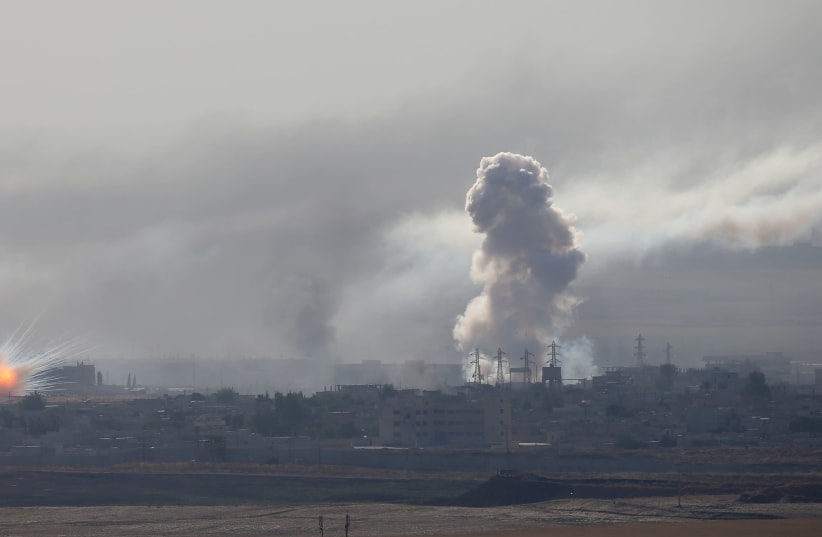On Sunday Trump tweeted that the ceasefire the US helped broker was “holding up very nicely. There are some minor skirmishes that have ended quickly. New areas being resettled with Kurds.” These “new areas” are areas that Kurds have been forced to flee to by the fighting and Turkish-backed jihadists who have indiscriminately shelled. One unarmed female politician, a victim of what Turkish media called a “successful neutralization” was dragged by her hair by jihadists and shot to death.
Trump says the new US plan is to “secure the oil.” In the process the US sent Vice President Mike Pence and Secretary of State Mike Pompeo to Ankara to negotiate a pause in Turkey’s offensive. In that pause the civilians of Sere Kaniye were removed in a convoy of ambulances, the end process in ethnic cleansing of civilians from areas that Ankara calls a “safe zone.” Into that area Turkey says it will settle millions of Arab refugees from other parts of Syria, a plan Ankara showed to the UN in September.
In the 1990s these kinds of efforts were called ethnic cleansing. The US helped broker the Dayton Accords in 1995 with the leader of the Republic of Serbia Slobodan Milosevic, president of Croatia Franjo Tudjman and President of Bosnia and Herzegovina Alija Izetbegovic. The agreement tried to lay down the areas of control in Bosnia between Serbs and Bosnians and Croats after years of war and allegations of ethnic cleansing. The US attempted to stop the violence, not give a stamp of approval for the removal of minorities, the way it has done in Syria.
In Kosovo the US also worked to stop violence. In this case it was more than 1 million Kosovar Albanians who had fled fighting between Serbia and Kosovar insurgents. The US worked through the Rambouillet Agreement of 1998 and eventually pushed for bombing in 1999 against Serbia. Twenty years later the US has done the opposite in Syria. After five years of working alongside mostly Kurdish fighters to defeat ISIS, the US decided on October 6 to withdraw from parts of Syria and to open the door for a Turkish attack on its former Syrian Democratic Forces partners. Since then, despite uproar in US media and among members of Congress, the US has distanced itself from its former SDF partners, and sought to work closely with Ankara to find a way to rid itself of the SDF and bring Turkey into northern Syria as the US withdraws.
US Senator Lindsey Graham, initially an opponent of Trump’s policy, now argues that the US has a chance at “historic solutions in Syria.” It appears that the new US push will be for Washington to keep control of oil fields near the Euphrates river while Turkey gets part of northern Syria and several hundred thousand Kurdish civilians are forced to flee. Unlike in the 1990s the US has shown no interest in listening to any of the Kurdish civilians in Syria. Even though Washington was involved with eastern Syria for five years, no voices from among the civilians have been invited to give their testimonies, the US has done nothing to investigate or monitor the bombing of its own SDF partners and done nothing to prevent attacks on civilians. Unlike in the Balkans where there was no US presence in Kosovo or Bosnia prior to the US attempt to prevent further violence, the US had a presence in eastern Syria but did not task its presence on the ground with reporting on possible human rights violations.
The Trump comments about moving Kurds to “new areas” and Graham’s discussions of a “solution” point to an acceptance that civilians have been forced to flee and will not return. Already thousands are coming to the Kurdistan region of northern Iraq. The US has shown no support for them, even though it was a US decision on October 6 who led to their uprooting. The chemical burn victims, who were burned by ordnance dropped on them near the Turkish border, are also receiving no visits by US officials to see if the war unleashed after October 6 involved the use of banned weapons.
